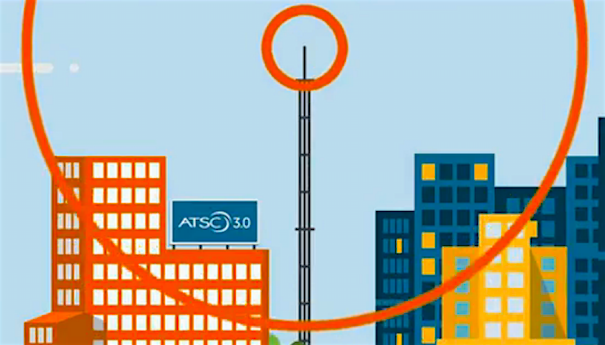FCC: NextGen TV Deployed in 68 Markets Reaching Half of All U.S. Homes
The FCC released the data as it asked for public comments on the NextGen TV transition and sunsetting of two 3.0 rules

WASHINGTON, D.C.—The FCC has released new data on NextGen TV deployments as part of a filing for a Third Further Notice on Proposed Rulemaking that will examine the transition to NextGen TV, a.k.a. ATSC 3.0.
“Based on our records, ATSC 3.0 stations have been licensed to operate in 68 markets, though in some cases it may be a single low power television station,” the FCC said. “Furthermore, most markets with 3.0 deployments have a single 3.0 `lighthouse' facility licensed to provide ATSC 3.0 service. According to S&P Global, Next Gen TV now reaches nearly 66.3 million unique households, or about 51.1% of total U.S. households. “
The FCC noted that at least one full power TV station has been licensed to provide ATSC 3.0 services in 54 DMAs.
It also said that based on data collected by its staff, there is a single ATSC 3.0 “lighthouse” facility in 38 markets that is providing the NextGen TV broadcasts in a market. In 13 markets, there is more than one “lighthouse” station providing the ATSC 3.0 broadcasts for itself and other stations.
The FCC’s Notice of Proposed Rulemaking is asking for public comment on the NextGen TV transition and on the scheduled sunset of two rules adopted in the FCC's First Next Gen TV Report and Order.
The two rules that are scheduled to sunset in 2023 include the rule requiring that a Next Gen TV station’s ATSC 1.0 simulcast primary video programming stream be “substantially similar” to its 3.0 primary programming stream and the rule that a Next Gen TV station comply with the ATSC A/322 standard, which was intended to ensure that local MVPDs could reliably carry the stream.
In addition, the FCC said it wanted public comment to help it examine how the ATSC 3.0 transition is proceeding, including the issue of whether holders of essential patents for the ATSC 3.0 standards are licensing such patents on reasonable and non-discriminatory terms.
The professional video industry's #1 source for news, trends and product and tech information. Sign up below.
As part of its examination of the transition, the FCC is also seeing information on ATSC 3.0 past and future deployments, availability of NextGen TV equipment, the number of people watching ATSC 3.0 broadcasts, whether any MVPDs are carrying the NextGen TV broadcasts even though they are not required to and a number of other issues and data points.
The requirement that the programing stream be substantially similar is set to expire in July of 2023 and the requirement that the primary video stream comply with ATSC A/322 is set to expire in March of 2023.
The FCC also noted that as “part of this review, we seek comment on whether broadcasters still consider ATSC 3.0 to be a trial technology and the extent to which broadcasters intend to fully transition to 3.0 at some point. Is the expectation still a uniform transition by all broadcasters at some future point? The Commission intended for broadcasters to operate in both 1.0 and 3.0 only for a `temporary’ period of time. We seek comment on the appropriate length of time broadcasters should be required or allowed to operate in both 1.0 and 3.0. What is the impact on OTA viewers and MVPDs of not having a date certain 3.0 transition deadline? For example, without a certain transition date, are viewers and MVPDs able to prepare for their own transitions? We also seek comment on the ways in which broadcasters are educating consumers about the continued progress of the transition.”
The full filing is available here.
George Winslow is the senior content producer for TV Tech. He has written about the television, media and technology industries for nearly 30 years for such publications as Broadcasting & Cable, Multichannel News and TV Tech. Over the years, he has edited a number of magazines, including Multichannel News International and World Screen, and moderated panels at such major industry events as NAB and MIP TV. He has published two books and dozens of encyclopedia articles on such subjects as the media, New York City history and economics.

